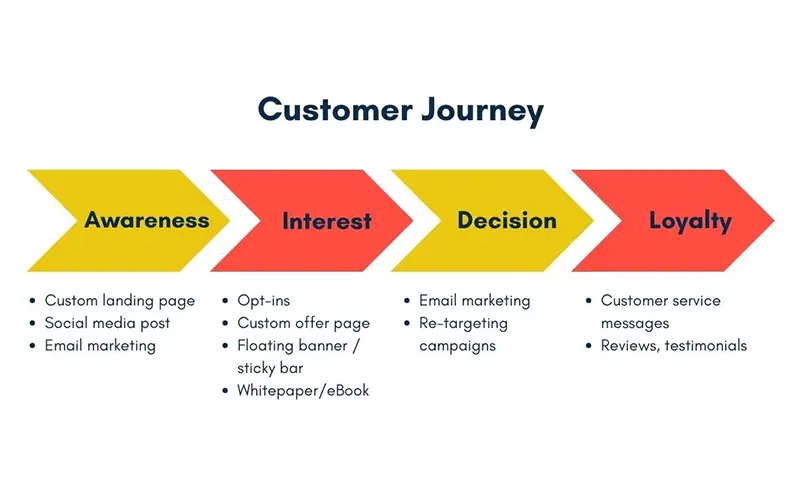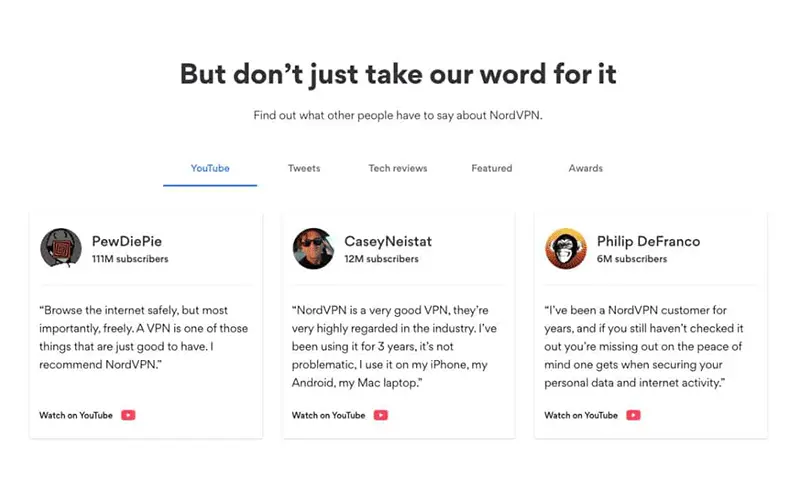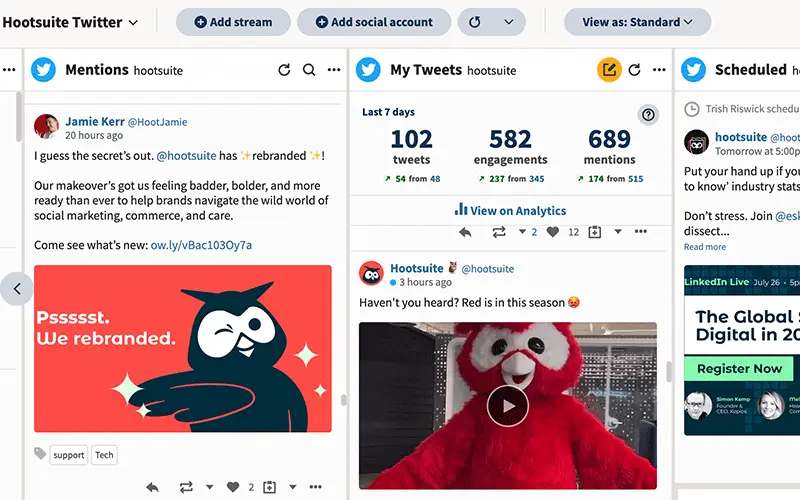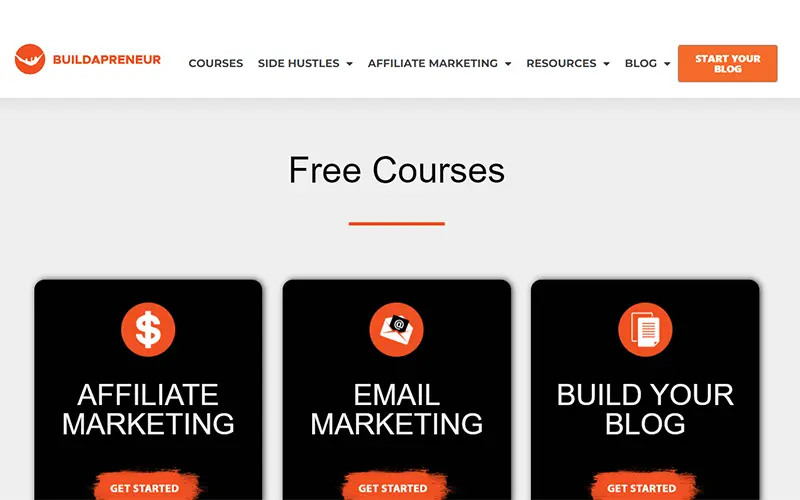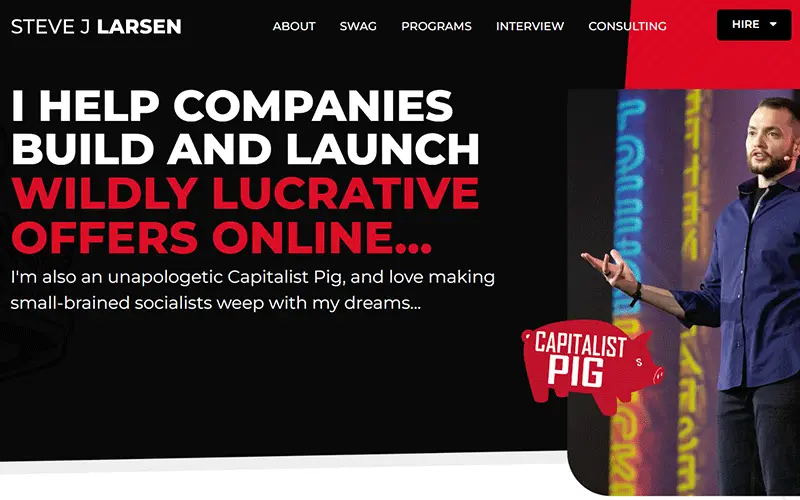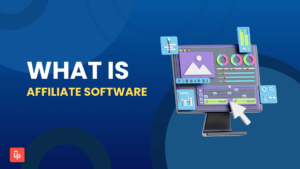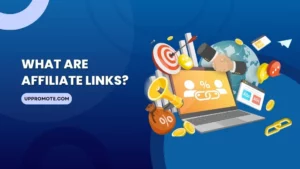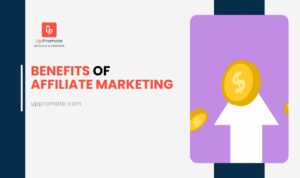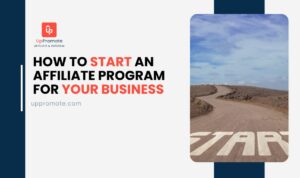There are various ways leading to successful affiliate conversions.
But rather than driving as much cold traffic as possible to a merchant, a simple funnel can streamline the process with more guaranteed success.
Want to work less and sell more in the future? An effective affiliate marketing funnel will help you achieve this step by step by providing value and building audience trust in the long run.
That way, you can turn leads into customers using practical strategies and earn consistent affiliate commissions. Learn how to utilize affiliate sales funnels and ensure customer satisfaction with high conversion rates right now!
What is an Affiliate Marketing Funnel?
|
For affiliates |
For merchants |
|
Sales is the ultimate goal. |
|
|
Based on the customer’s journey mostly. |
|
|
Focus on retention. |
Focus on conversion. |
|
Lead is the no.1 metric. |
Sale is the no.1 metric. |
|
Aim for the biggest crowd. |
Aim for the highest engagement. |
For Affiliates
An affiliate marketing funnel is a thoroughly designed path mapping out the customer journey as they move towards buying your affiliate products or services.
As target audiences visit your landing page via affiliate links, a sales funnel plans out possible actions they may take at different stages. From grabbing their attention and providing more information during their consideration to a successful conversion.
Affiliate marketers mainly use an affiliate funnel to capture leads, so they try to reach an extensive customer base and attract as much interest as possible.
In each funnel stage, you will develop suitable strategies to deliver customized value for your site visitors and get them moving to the last steps before purchasing. Even if prospective buyers do not convert right away, the funnel will help you define what to do next to ultimately make sales.
And aside from generating leads, affiliate marketers need to ensure they return for more. Repeated purchases from past buyers mean you have loyal customers and, thus, increase your affiliate income.
For Merchants
The affiliate funnel merchants need to build is quite similar to their affiliate partner’s. After all, the end goal for both parties is to generate considerable sales based on a completed customer journey.
However, business owners have different focuses and targets than their affiliates using the same funnel. As important as retention in sales revenue, this funnel works to get more conversions, both from existing buyers and new ones.
Affiliates focus on gaining leads in mass numbers (potential customers not yet interested in buying), while merchants aim to make sales from those ready to purchase. This group is definitely smaller than the former, but they are not in the consideration stage anymore and willing to spend money on your products or services.
Think of quantity and quality to separate these affiliate funnels for different users.
Moreover, merchants also need their buyers to actually engage in the customer journey, not just plain interest. The deeper the engagement (recurring purchases, newsletter subscriptions, etc.), the more brand awareness they grow.
In general, an affiliate marketing sales funnel requires you to have specific plans to motivate customers through each engagement stage. Then, you can adjust your marketing strategies to improve these steps according to how buyers engage in real life.
This will result in healthy conversion rates and bring more sales. That is why, whether you are an affiliate or merchant, you need an effective affiliate funnel to strategize marketing efforts and improve your activities’ return on investment (ROI).
How Does an Affiliate Marketing Funnel Work?
Get to know 4 key stages of a high-converting affiliate marketing funnel:
Awareness
At the awareness stage, your customer is an individual with zero clue about your product’s existence. Therefore, you need to create introduction content to build awareness.
Suggested tools for this stage:
This is when you initiate affiliate marketing campaigns using various approaches. You can apply the search engine optimization (SEO) practice when producing content on blogs or social media platforms.
It is best to have diverse traffic sources, both organic and paid, at this stage to expand product awareness.
Interest
Now that the customer is aware of your product, you need to increase its online visibility to pique their interest. Emphasize how your product can solve their problems.
Suggested tools for this stage:
Depending on your blog context and user interface, choose suitable opt-in pages with call-to-actions (CTAs) to draw visitors’ attention. Popular options include side banners, total pages, lightboxes, or floating bars, displaying CTAs like Sign up or Subscribe here.
Decision
The decision stage aims to turn prospective customers into buyers. Up to this point, they are intrigued and convinced enough to finally spend money on your product.
Suggested tools for this stage:
Email marketing enables you to send an email sequence to nurture leads during their consideration. Re-targeting campaigns are also helpful in convincing visitors who previously landed on specific pages of your website.
Loyalty
A successful sales funnel ends with this post-conversion stage. After your customer buys the product, more effort is required to retain them for repeated purchases and even word-of-mouth marketing.
Suggested tools for this stage:
Make use of your existing mailing list to send thank-you messages and regular updates on the latest offers. Develop a sustainable relationship with these email subscribers to achieve the ultimate goal of a funnel – new and recurring sales.
Benefits of Affiliate Marketing Funnel
Some might say that everything we plan in an affiliate funnel is the same as a real-life customer journey. So why not let these leads convert naturally and waste time trying to build an effective sales funnel?
The following benefits of an affiliate sales funnel will prove its significance.
Capture wide attention
Adding affiliate links to your content or running paid advertisements are common ways to get leads. But can they guarantee long-lessensand consistent traffic or just briskly capture cold ones?
Although a customer journey always begins with product awareness, having a funnel for affiliate marketing helps you determine exactly what to do to reach wider audiences.
Assuming that you need to select specific online platforms to promote a sports clothing brand. You will get lost easily since there are too many options like a website, Facebook, Instagram, Twitter, etc.
Crafting a sales funnel lets you compare the promotional effectiveness for this niche on each platform and how to keep leads engaged throughout the journey. This is helpful, especially when a marketer needs to promote referral links they receive from affiliate programs.
If potential buyers naturally come to you via online search, that is great news. But without an affiliate funnel, do you know what needs to be done next?
So, it is not plainly about creating free content and waiting around for traffic. A thoughtfully designed funnel is your powerful tool to grab more audience attention and also plan further to nurture these relationships.
Signal trust & authority
If you want to provide value for your customers throughout their shopping process, an affiliate sales funnel can guarantee that.
For example, instead of regular social media posts to advertise a business, merchants can produce educational blogs related to their selling niche and incorporate a bit of product promotion.
Interested individuals will feel more motivated to pay for monthly subscriptions once they read and learn that, let’s say, your homeschooling app can teach their kids Math.
After researching your materials (received value), these leads know exactly what they want and only purchase when they are ready. This makes buyer’s remorse and boosts customer satisfaction with much fewer refund requests.
We bet you would not know that if not using an affiliate funnel.
Understand that your brand still leaves a good impression even when people do not buy from you. The audiences feel you have delivered genuine value and not pop-up ads all over their social media feeds.
As a result, you develop a solid brand trust with an authentic voice that visitors are willing to spread the word about your product to others.
Improve conversion rate
Needless to say, the sole purpose of a funnel is to boost conversions and generate sales. As you understand your leads’ insights, you can provide more personalized/targeted help to increase brand trust and eventually sales revenue.
In an affiliate marketer’s case, you can take advantage of this opportunity to negotiate a higher commission rate with your merchant.
How?
Product owners know very well the difference between cold traffic and quality leads. They are not made equally, so some merchants will recognize your efforts in driving loyal customers (with the help of a well-organized sales funnel).
Even if you cannot send them a boatload of traffic yet, merchants will see that your leads convert at a better rate and ask for fewer refunds. Consequently, you have the right to deal with them for a bonus or a commission raise.
Set up retention & sustainability
Even as a newbie in affiliate marketing with little knowledge, you can still capture leads from consistent efforts. However, smart marketers will not wait for brand new customers after a successful sale.
That is why you need a sales funnel to help retain existing buyers and get them to purchase again and again. Attracting new buyers is a must, but do not leave out the potential of generating recurring revenue.
Fact: Customers going through a sales funnel will likely be more loyal to your brand than those who do not. As mentioned earlier, this is because they have received valuable information and education; thus, it is not about getting one-time purchases.
Generally, a long-term planned funnel ensures the best user experience to increase their chance of purchasing again. It extends the customer’s lifetime value and loyalty toward a business, eventually making more sales.
Note for affiliates: It is possible to create your own buyers list from these loyal customers and plan future marketing tactics towards them. No more concern about insufficient sales since you already know what captivates these people.
Pinpoint exact touch point for improvement
Lastly, the most significant advantage of having an affiliate funnel is tracking your marketing performance to find areas for improvement.
If similar situations are happening to your campaigns:
-
people engaging with your emails but not visiting the offer page
-
visit the affiliate product landing page then left
-
excited about the offer but not taking actions on the offer page
Then, only an effective funnel can help you spot and fix these problems.
Since a funnel follows a customer journey step by step, you will not be left guessing anymore.
It lets you identify which stage most leads drop off and how to improve this issue.
Sounds much more breathable, right?
When you run affiliate marketing campaigns without knowing exactly where potential buyers stop their journey, it reduces your strategies’ effectiveness and turns into a waste of time.
Therefore, do not underestimate the power of an affiliate funnel in improving your marketing efforts to gain more sales.
Affiliate Marketing Funnel: 6 Steps to Build an Effective One
1. Have the appropriate products/services to offer
Before building a funnel for affiliate marketing, you need to find products or services that resonate with your potential buyers for later promotion.
It is highly recommended to advertise products you are either familiar with or interested in. You know that feeling of making good money from things you like? Indescribable.
Even better if you have experienced these goods yourself to deliver authentic reviews and gain more customer trust.
You might also want to review current trends to see which industries are topping the charts. Based on our experience, evergreen niches that can be easily monetized with online marketing include fashion, education, finance, pets, health & beauty, travel, etc.
If you sign up for affiliate programs via renowned networks like CJ Affiliate or Awin, there are thousands of available products to choose from. Make sure to check their conversion rate, promotional resources, and especially their relevance to your target audience.
2. Design a hyper-focused bridge (landing page/blog/podcast/social presence)
Regardless of your product having its own sales page, you still need a hyper-focused bridge page to prepare and connect with your potential customers.
Even a brilliant product offer cannot win people’s hearts if it comes with a lousy display.
This is when the power of content marketing takes in as you produce informative and helpful content during this stage. There are various platforms to execute the bridge, such as blog articles, landing pages, podcasts, or social media channels.
Most affiliate marketers showcase a short video with a self-introduction to share product reviews, a call-to-action, or sometimes give out free gifts.
In case it is your own product, you can ask for testimonials from your affiliates as a great means to add more social proof.
There is no limit to how and where you want to create a bridge page for your affiliate product. Use third-party platforms like ClickFunnels or WordPress partners to develop an attractive site.
3. Drive traffic to your landing page
Here are several popular methods to drive traffic to your product page:
Paid ads
Other than attracting organic customers, you need a more powerful source to get consistent traffic. Both merchants and affiliate marketers often pay for advertisements on famous social platforms (Facebook, YouTube, etc.) or search engines like Google.
Paid ads are beneficial in targeting specific audiences who will likely convert instead of a mass crowd.
Social media marketing
Another approach that is mostly free of charge is using your social media for affiliate traffic.
Always keep these in mind to see results from social media promotion:
- Choose the right platform. For example, lifestyle items are more welcomed on Instagram and Pinterest than on LinkedIn.
- Bring value. Avoid oversharing affiliate links in social media posts without valuable information.
Search engine optimization (SEO)
SEO helps optimize your website content to boost its visibility through organic searches. Your blog posts should include buyer intent keywords to drive visitors into their customer journey.
- Informational keywords: have high search volumes and are good for list building, e.g., “how to bleach your hair”
- Comparison keywords: e.g., “safe hair bleach products”
- Product keywords: e.g., “L’oreal bleaching kit”
4. Get visitors to leave their contact behind
Your affiliate marketing funnel has succeeded halfway through when website visitors happily provide their contact for further communication.
Thus, after redirecting them to your landing page, it is time to collect information, like their email addresses, to build an email list.
If you know about email automation, it is the best part of operating a funnel, which brings you unimaginable convenience. You can set up opt-in forms with action buttons (e.g., Subscribe now, Get your ebook here) and guide customers to purchase your affiliate product eventually.
This is how you complete all the work upfront and generate constant affiliate income afterward. There is no need to promote a product actively.
As far as we are concerned, free giveaways are the most attractive lead magnet to use in a sales funnel. They can be free online courses or ebooks as long as they bring relevant value to your visitors.
5. Deliver on the promise for your lead
Now that you have a list of high-quality leads, they should be nurtured to make a purchase soon. The power of email marketing shines here, where you start building relationships with prospective customers and gently convince them toward a buying decision.
In your email series, you can provide educational content about your product, offer exclusive deals, or share industry insights with your email subscribers. Use popular tools like MailChimp to automatically send email campaigns with ready-to-use templates.
Your potential buyers should go through a typical sequence like this:
-
Welcome email: A warm welcome for your leads and set the tone of your communication in brand introduction and lead magnet value.
-
Educational content: Include articles, videos, infographics, or webinars about your product to help leads understand your offers and their benefits.
-
Industry insights: Position your brand as knowledgeable in the niche to increase credibility and trust.
-
Social proof: Case studies, positive reviews, and customer testimonials are strong trust signals to reassure leads about the quality of your offer.
-
Special offers: Incentivize email subscribers by delivering special discounts, deals, or early-bird offers.
-
Engagement emails: Invite them to join a social media group or ask for feedback to increase customer engagement in the community.
-
Retargeting emails: Gently remind leads who showed interest but have not yet purchased, highlighting your product benefits and encouraging them to take action.
6. Monitor then make improvements.
All in all, creating a funnel for affiliate marketing is not a complicated process.
However, it does not stop after you have built the necessary pages and set up email automation to drive traffic. Successful affiliate marketers and merchants constantly monitor their processes to find areas for improvement.
The key lies in keeping track of your key performance indicators (KPIs), understanding your funnel’s strengths and weaknesses, and then improving it based on crucial data.
An effective affiliate funnel requires relentless enhancement to ensure efficiency in driving conversions and sales. Apply A/B testing and optimize your pages to see what works and what does not.
Examples of Effective Affiliate Marketing Funnels
Spencer Mecham – Membership Funnel
Spencer Mecham founded Affiliate Secrets 2.0 and Buildapreneur, providing quality educational resources to help people earn a passive income.
At first sight, his affiliate marketing funnel has a website that is not much different from other affiliate marketers on the market. But his secret recipe lies in the attractive FREE training courses giveaway.
After choosing a course they are interested in, his target audiences will be sent to the opt-in page where they leave their email addresses. Then, they are redirected to a bridge page with a video explaining why these people need email marketing software and convincing them to use one.
Clicking the “Active Campaign” button leads to a business that Spencer joins their affiliate program and earns money for every sale.
Clients get helpful video training from his courses and use his affiliate products as tools to streamline their workflow.
Stephen J Larsen – Bridge Funnel
If you sign up for ClickFunnels’ Funnel Hacking Live, you will immediately recognize speaker Stephen J Larsen.
As an affiliate expert, he uses an effective sales funnel to promote the One Funnel Away Challenge program. The funnel involves an informative landing page with text and video introducing what people can avail from it, plus bonuses for signing up.
His strategies make the offer stand out by offering an irresistible deal of over $2,000 in value. He also pitches why leads should buy from him and not others.
After hitting the Registration button, a pop-up appears for customers to opt-in to his list before visiting the product landing page.
Now that these clients are on his mailing list, Stephen can send follow-up emails to nurture a relationship and pitch other products for sale in the future.
Instagram Secrets – Ebook Funnel
Being a beginner in this field means it is not easy to create video training like Spencer and Stephen. That is why the lead magnet funnel might be a more accessible approach.
Funnel Secrets US targeted clients who want to generate online traffic on Instagram by offering a free ebook giveaway named 99 Instagram Secrets. Their audiences will provide email addresses on the opt-in page to receive this book.
Next, when they are redirected to the thank you page, it comes with a download link for an extra ebook called Traffic Secrets. This connects with an affiliate offer that pays Funnel Secrets for every successful sale.
So, the funnel is straightforward yet effective in this case. They got many leads and generated a bunch of affiliate sales.
Conclusion
Again, building an affiliate marketing funnel is not a hassle, even for beginners in this field. But the ultimate goal is to create an effective, conversion-driving one.
Consider your target market thoroughly in the very first steps and follow a sequence of actions as guided in this article. They can help steer audiences toward completing a customer journey and stay loyal to your brand for recurring purchases.
Forget the cold leads that buy once and never look back – having a funnel is your key to affiliate marketing success. Use it to gain traffic, increase sales, and develop your brand trust.


